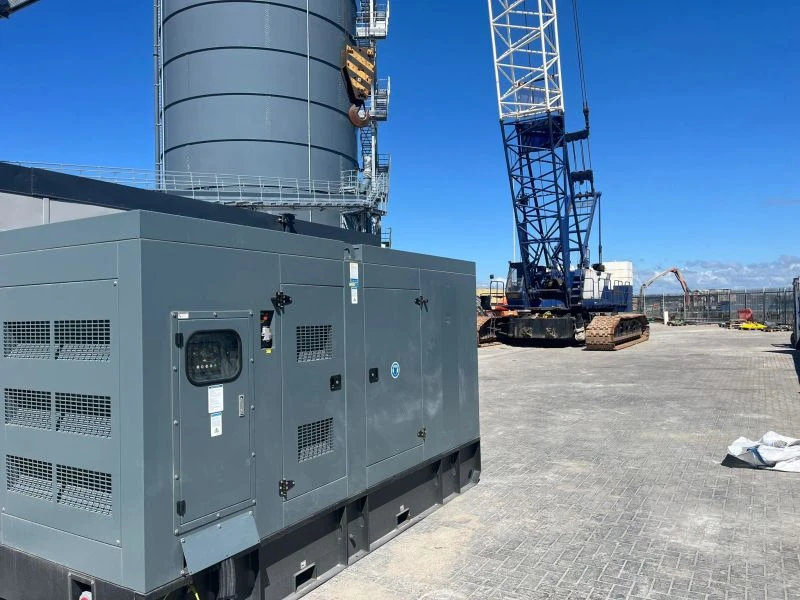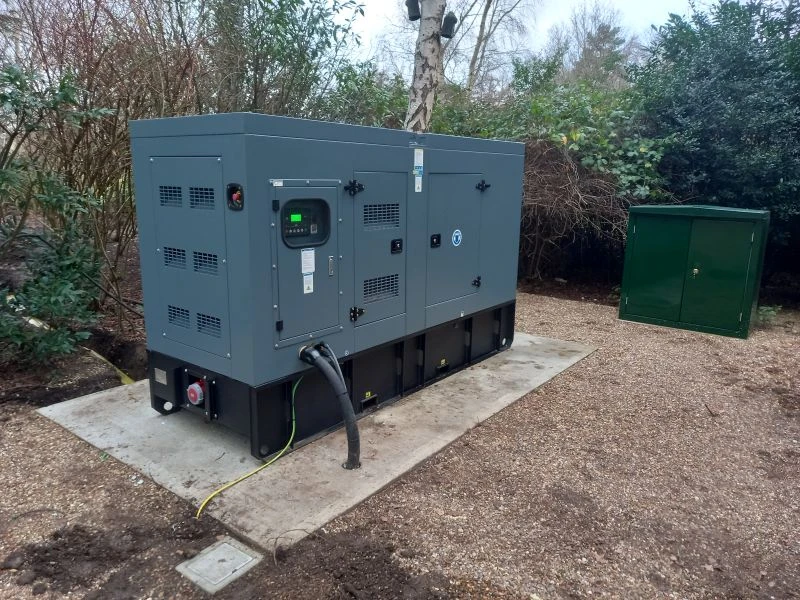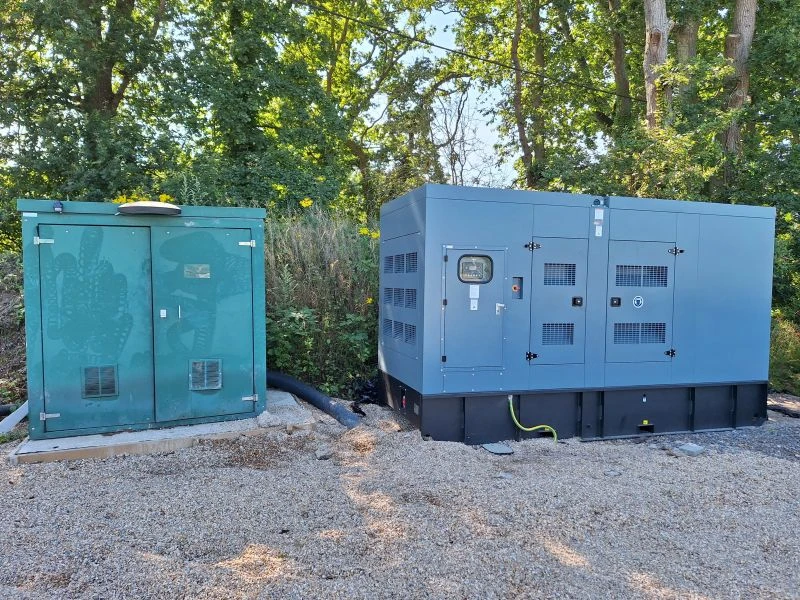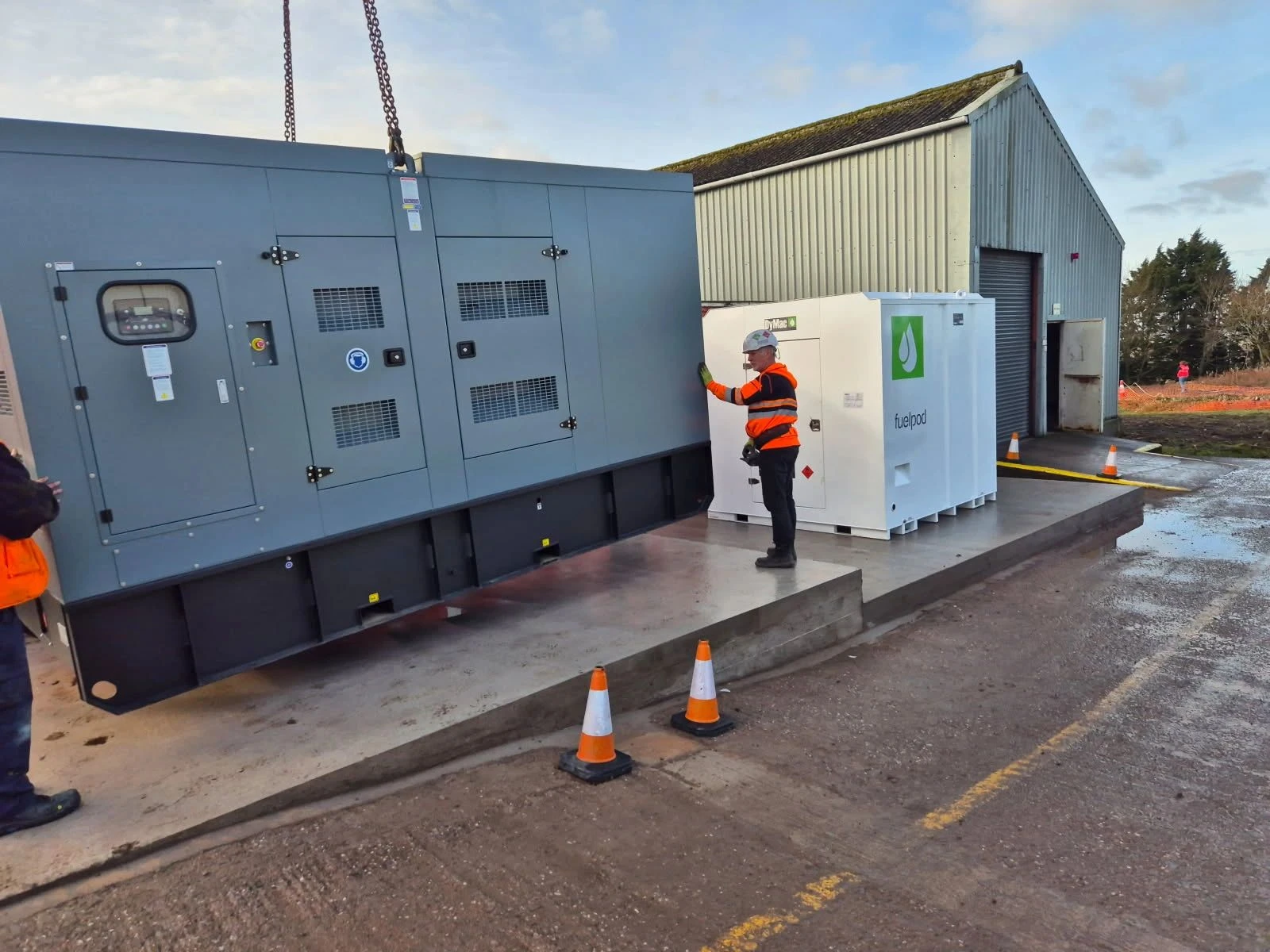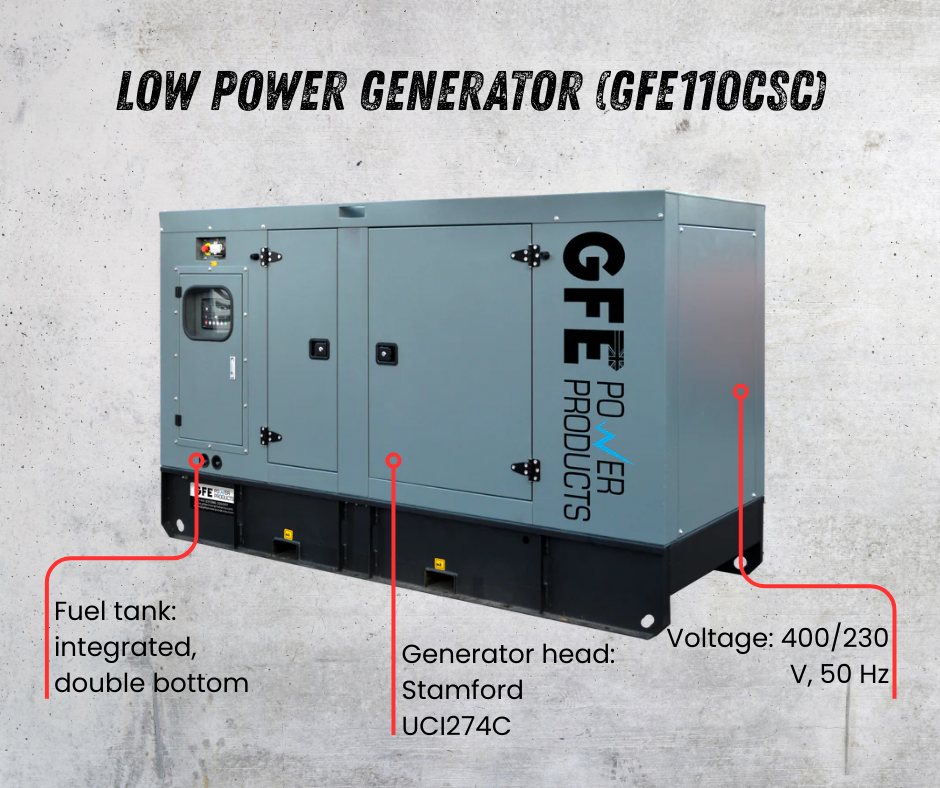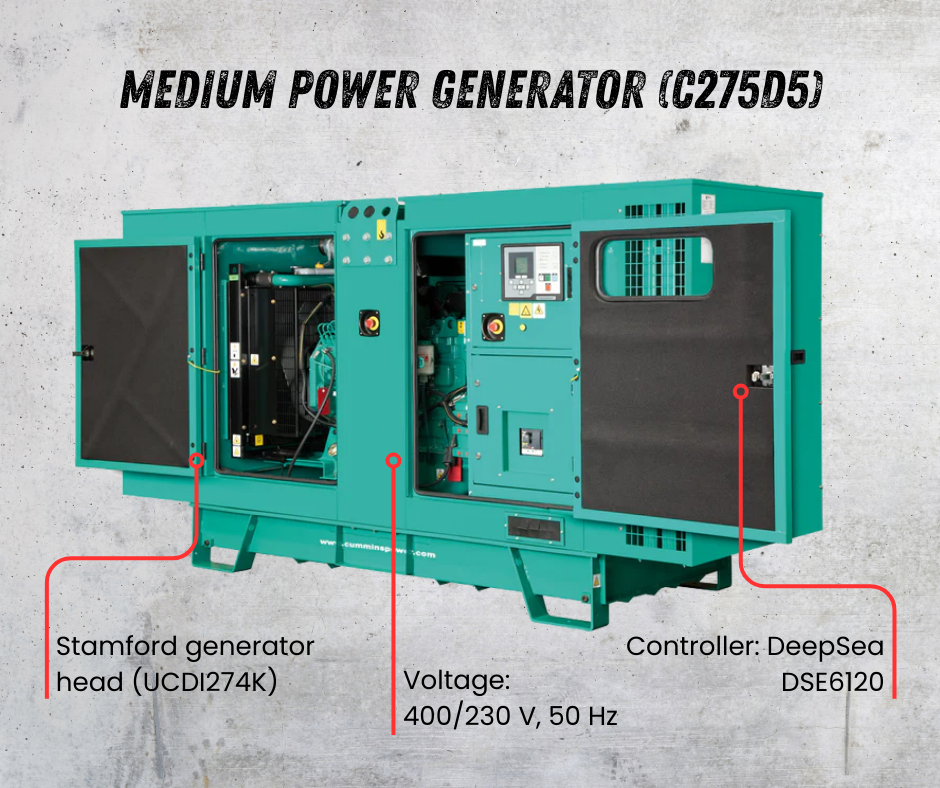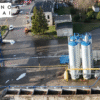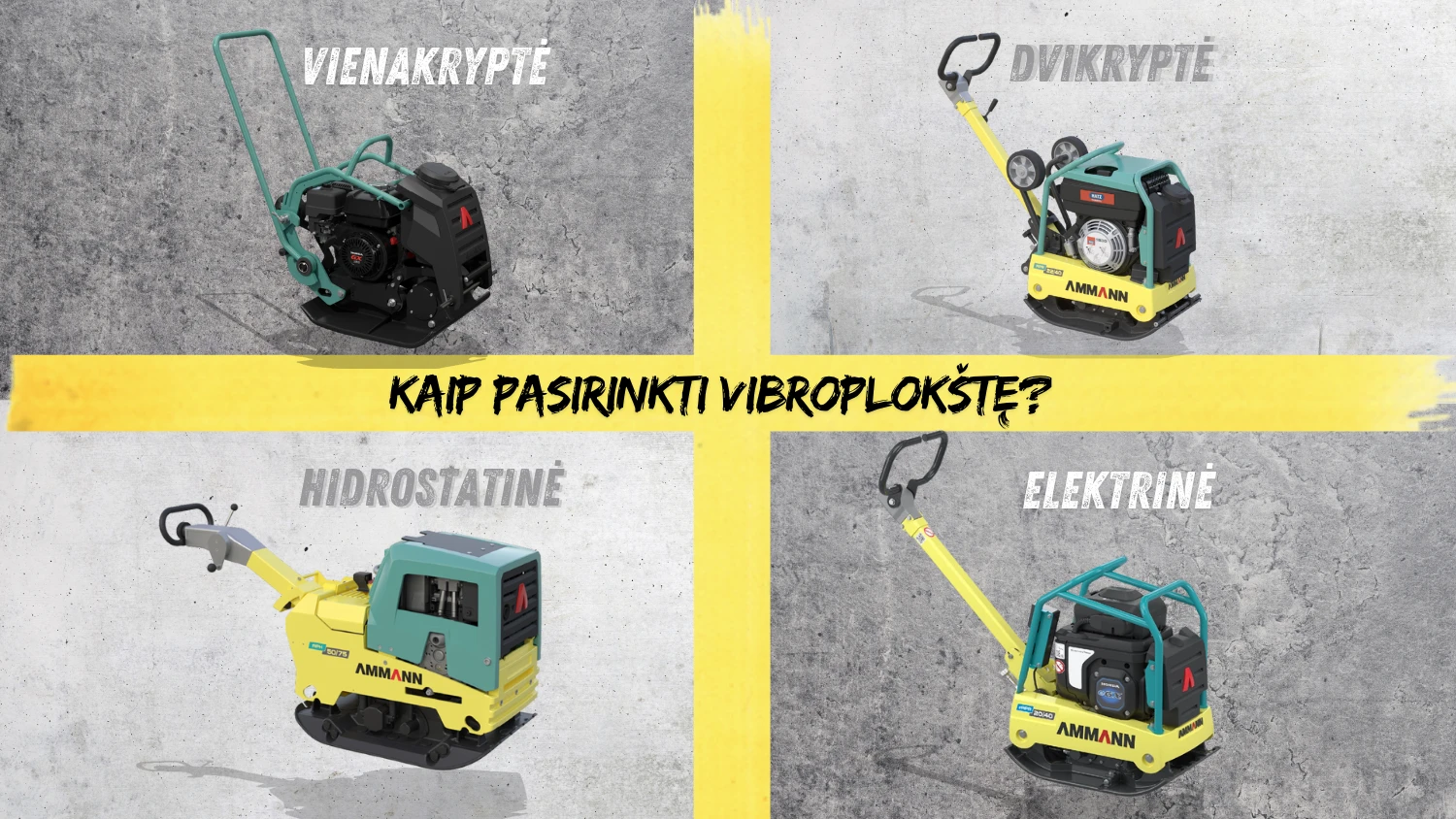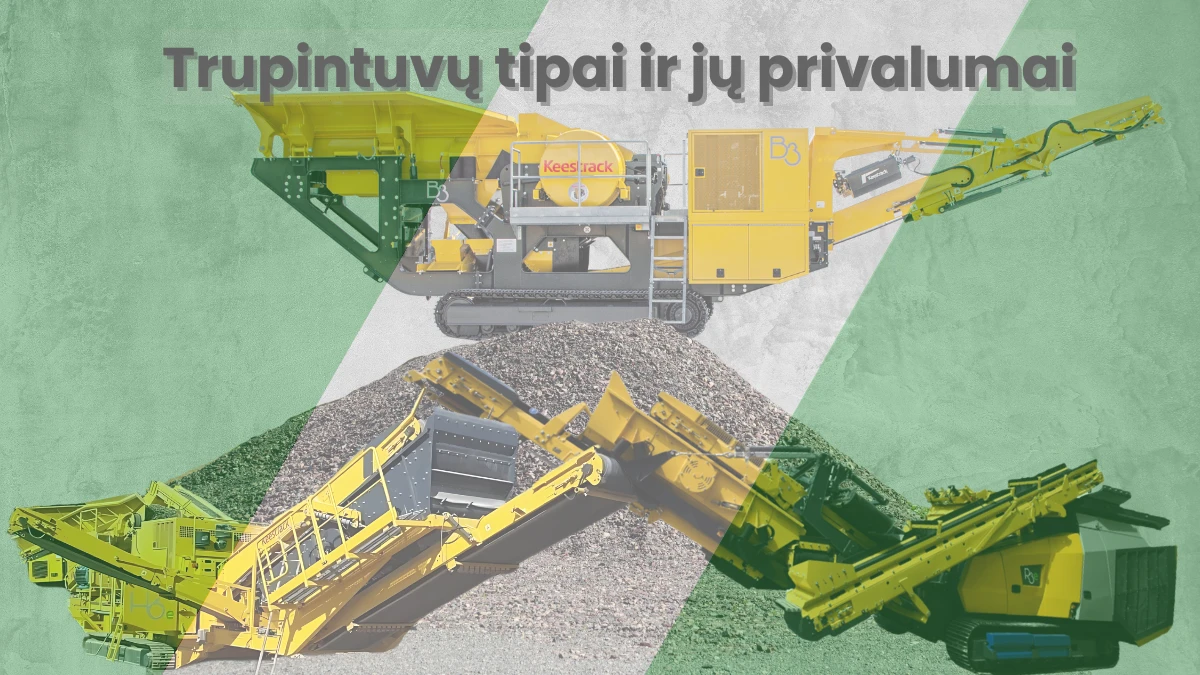Why is it important to know how to choose a diesel generator?
Diesel generators remain the most reliable way to ensure power where no grid connection is available or where backup power is required. Are you wondering which diesel generator would best suit your needs – at a construction site, an industrial facility, or as an emergency power source? The choice of generator determines not only the reliability of electricity supply, but also fuel consumption, maintenance costs, and equipment lifetime.
The market is dominated by several main categories – small power, medium power, high power generators, and the choice between open frame and closed canopy (silent) versions.
Below we review the differences, examples, advantages, disadvantages, and comparable models.
Different types of diesel generators are offered on the market – from small units to industrial solutions for the largest facilities. Here we present the main types according to GFE Power Products.
Small Power Generators (20–100 kVA)
Where to use?
Small businesses, residential homes, mobile sites, temporary construction projects, water supply systems, pump stations, or lighting systems.
Pros:
-
Compact, mobile, easy to transport
-
Economical for low loads
-
Simple maintenance
Cons:
-
Limited power, not suitable for heavy industry or high-demand equipment
-
Noisy without canopy
GFE models:
- C22D5 (20–22 kVA) – for offices, small businesses
- GFE110CSC (100 kVA) – for construction sites
Analogues:
- FG Wilson P22-1 (22 kVA)
- Caterpillar DE33 GC (33 kVA)
- Kohler-SDMO J88 (88 kVA)
- Himoinsa HYW-20 T5 / HYW-100 T5
- Pramac GSW80P (~80 kVA)
Medium Power Generators (100–650 kVA)
Where to use?
Industrial facilities, factories, logistics centers, shopping complexes.
Pros:
-
Suitable for both prime and standby use
-
Can power multiple consumers
-
Stable frequency and voltage
Cons:
-
Higher maintenance costs
-
Requires professional installation
GFE models:
- C275D5 (250–275 kVA) – ideal for manufacturing facilities
- C550D5e (500–550 kVA) – suitable for industrial sites
Analogues:
- FG Wilson P275-3 (250 kVA)
- CAT DE500 GC (500 kVA)
- Kohler-SDMO J250 (250 kVA), J550 (550 kVA)
- Himoinsa HFW-250 T5 / HFW-500 T5
- Atlas Copco QAS 500
High Power Generators (800–2500 kVA)
Where to use?
Hospitals, data centers, airports, and other facilities where operations cannot be interrupted (critical infrastructure).
Pros:
-
Maximum reliability and stability
-
Suitable for continuous load
-
Can operate 24/7
Cons:
-
Large dimensions and transport costs
-
High purchase and maintenance costs
GFE models:
- GFE2200PLC (1980 kVA) –reliable solution for large industrial plants, shopping centers, or logistics warehouses where constant and stable power is essential.
- GFE1650PSO (1500 kVA) – designed for hospitals, data centers, and other critical facilities where uninterrupted power is vital.
Analogues:
- CAT DE2000E0 (50 Hz)
- MTU 20V4000 DS (1600–2500 kVA)
- Kohler-SDMO KD2500 (2500 kVA)
- FG Wilson P1700-1 (1700 kVA)
Open Frame vs. Silent (Canopy) Generators
Where to use?
- Open frame – in industrial buildings where noise is not an issue.
- Silent/canopy – in cities, residential areas, or noise-sensitive environments.
Silent generator pros: reduced noise, protection against environmental impact
Silent generator cons: higher cost, heavier dimensions
GFE models:
- GFE 150 kVA Silent Canopy – for construction sites
- GFE 300 kVA Silent – for industrial facilities
Analogues:
- Kohler-SDMO J110
- Himoinsa HYW-100 T5
Application Areas and Model Examples
- Small businesses, homes: GFE C22D5, FG Wilson P22-1
- Construction sites: GFE110CSC (100 kVA), CAT DE110
- Industry: GFE C275D5, Kohler-SDMO J250
- Hospitals, server rooms: GFE C1675D5A, CAT 3516C, MTU 20V4000 DS4000 (50 Hz)
Summary of Pros and Cons
Pros:
✅ Reliability and durability
✅ Wide power range
✅ Cummins + Stamford + DeepSea combination – industry standard
✅ Can be used as both prime and standby source
Cons:
⚠️ Requires regular maintenance
⚠️ Noisy without canopy
⚠️ Higher operating costs compared to gas generators
GFE Power Products Unique Advantages
All GFE diesel generators are equipped to ensure reliable operation even in extreme conditions. The integrated engine block pre-heating system allows the generator to quickly reach operating temperature even in cold climates, ensuring smooth startup. In addition, batteries are charged automatically, so the equipment is always ready to work without operator intervention. These features not only reduce downtime risk but also guarantee longer service life and lower operating costs.
FAQ – Frequently Asked Questions
Is a diesel generator economical?
Yes, especially in long-term PRP (Prime Rated Power) mode – it consumes less fuel than gasoline alternatives.
Which type to choose – open or silent?
If noise matters – choose silent/canopy. If the generator will be placed indoors – open frame is sufficient.
What power range can be selected?
Standard models cover from 20 kVA to 650 kVA, with project-based solutions up to 2500 kVA.
Can a generator be customized?
Yes, you can choose the canopy, fuel tank size, additional features (ATS – Automatic Transfer Switch, monitoring).
Conclusions and Recommendations
When choosing a diesel generator, it is most important to evaluate:
-
Required power (kW/kVA)
-
Usage time (standby or prime mode)
-
Noise requirements (open or silent)
-
Service accessibility and spare parts availability
Both GFE Power Products diesel generators and analogues (CAT, Perkins, Kohler, Volvo, MTU) have their niche, so the decision depends on the project size, load type, and budget.

